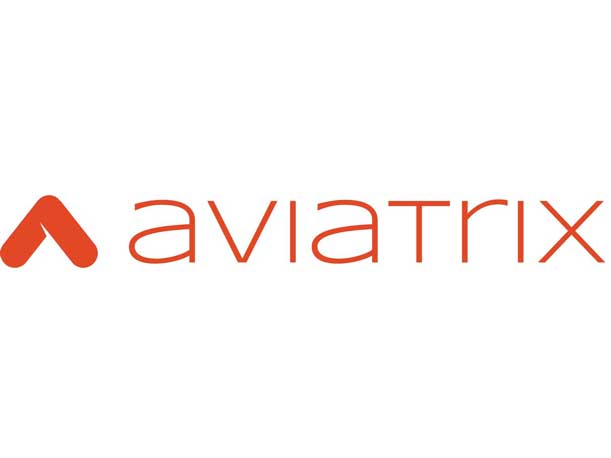Aviatrix Aims To Eliminate ‘Last-Generation’ Firewalls With ‘First’ Ever Distributed Cloud Firewall
“I say that May 18 is the day the bullet left the chamber,” says Aviatrix President and CEO Steve Mullaney. “The one you are targeting may not die right away. But pay attention. We are going to look back on the launch of this and say this was the day that cloud network security was fixed.”

Aviatrix President and CEO Steve Mullaney said the formal launch Thursday of the company’s Distributed Cloud Firewall marks the beginning of the end for literally billions of traditional network firewalls.
“I say that May 18 is the day the bullet left the chamber,” says Mullaney. “The one you are targeting may not die right away. But pay attention. We are going to look back on the launch of this and say this was the day that cloud network security was fixed.”
Mullaney, who helped coin the term next-generation firewall when he was a vice president of marketing and interim CEO at Palo Alto Networks from 2007 to 2009, is now on a mission to replace those network firewalls with the Aviatrix Distributed Cloud Firewall.
For Mullaney, who also helped reinvent secure networking in the client server era as the CEO of Nicira, the new Aviatrix next-generation Distributed Cloud Firewall means an end to the “bad security,” “bad performance” and “horribly expensive” era of what he calls “last-generation” network firewalls.
The Aviatrix Distributed Cloud Firewall – which is aimed at redefining network security for the cloud era- for the first time distributes firewall functionality into the fabric of the network, said Mullaney.
“This is the only way to provide security in a perimeter less zero trust environment,” said Mullaney. “Networking and network security have to be integrated into the fabric of the network. It is just something that the network does. It is what we call secure cloud networking. It is not two things. It is not a network where you share traffic with security. The network is secure. It is secure cloud networking.”
Aviatrix software developers- many that previously worked for Google- have been working on the Distributed Cloud Firewall for the last two to three years, said Mullaney.
“We have all Google guys,” he said. “These are all Istio (programmable, application aware network service mesh) and Kubernetes guys. They understand distributed systems. They are not box guys. Most firewall people all their engineers are box people. They don’t know how to build a distributed system. That’s a Google world.”
The distributed architectural approach that Aviatrix took with the development of its Distributed Cloud Firewall makes it fundamentally different from both traditional firewalls and even public cloud firewalls, said Mullaney.
“If you architect your network correctly things just kind of work,” he said. “If you have a bad architecture things never work. It is horrible. That is the mode we are in right now: we are not architected for network security correctly in the cloud. We are jamming the old world concept of a last-generation firewall and sticking them and lifting and shifting them into the cloud. And then we are surprised when things are horrendous. All aspects of it are bad. It is all bad. It’s the wrong architecture. Come in with the right architecture and all of a sudden things get easier.”
John Bristol, a secure cloud and modern networking specialist for Enterprise Vision Technologies, a Santa Monica, Calif. headquartered disruptive digital transformation solution provider, said he is excited about the opportunity to fundamentally transform cloud networking with Aviatrix.
“Our customers are very large enterprises that are now in multicloud,” he said. “They don’t have the expertise across clouds. Aviatrix is a game changer for us. It makes us relevant again in cloud architecture.”
Bristol, a 25 year channel veteran and one time Cisco CCIE certified network architect, said Aviatrix is giving the channel a “seat at the table” in the new multicloud networking era.
“The Distributed Cloud Firewall provides provides cost optimization,” he said. “You are no longer running these large instances for a centralized last-generation firewall. The old firewalls were designed for on prem and pushed into the cloud. It doesn’t scale and is not cost effective.We are seeing a lot of cost savings with Aviatrix Distriubuted Cloud Firewall. It is architected for multicloud and cloud native with all the enterprise networking functionality we are accustomed to in the on prem world. This is a game changer.”
The distributed Aviatrix Cloud Firewall architecture is opening new conversations with customers, bringing together cloud architects, security architects and network architects, said Bristol “That is the value of the channel,” he said. “We are that bridge bringing together the different camps within a customer that typically run independently. Some talk well together and some organizations don’t talk well at all. We are able to be that bridge for our customers. That is exciting.”
Mullaney said his message to partners is: “Do you want to be on the LGFW (Last Generation Firewall) track or do you want to jump on to the new innovation? You are looking at the emergence of a powerhouse in networking and network security with Aviatrix. This is a Cisco circa 1992.”
Mullaney, in fact, sees Distributed Cloud Firewall as the launch of Aviatrix as a force to be reckoned with in cloud networking.
“What I have been doing the last four years is building that networking infrastructure, building a reliable, resilient, fault tolerant, highly capable cloud networking solution,” he said. “Distributed Cloud Firewall is the announcement of Aviatrix.”
As for how long it will take to replace the billions of traditional network firewalls, Mullaney says he is ready for the long haul
“It might take years,” he said. “I have years. We have time. This is all about the next 30 years for cloud. We can’t change it overnight. But the world will be changed on May 18 because it is going to show everybody architecturally this is the way to do it.”